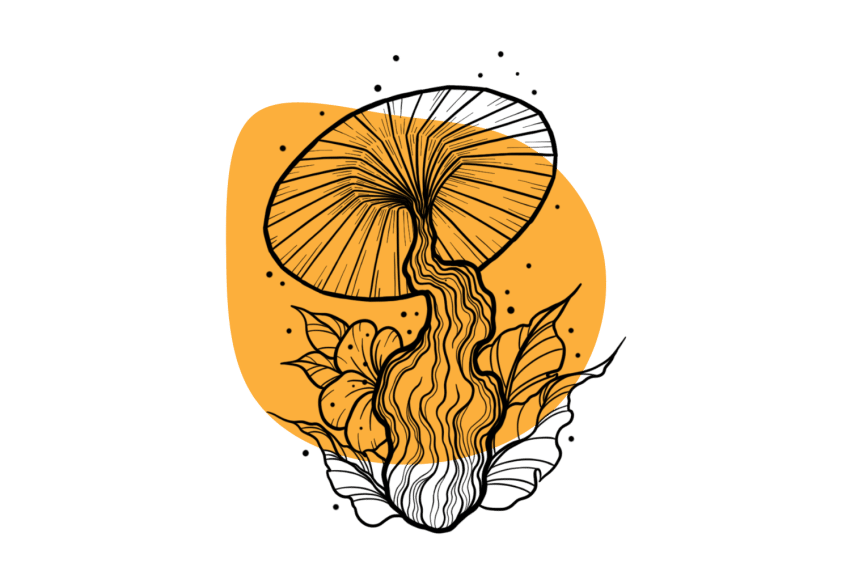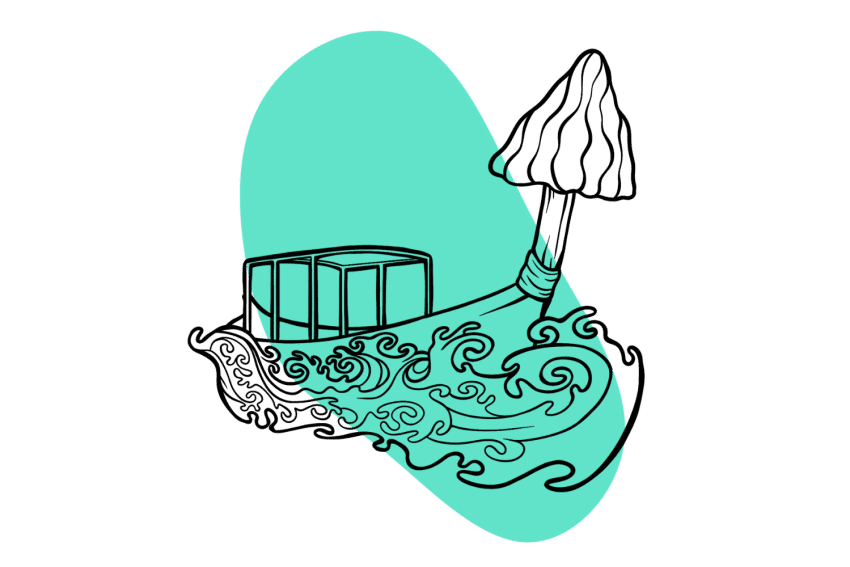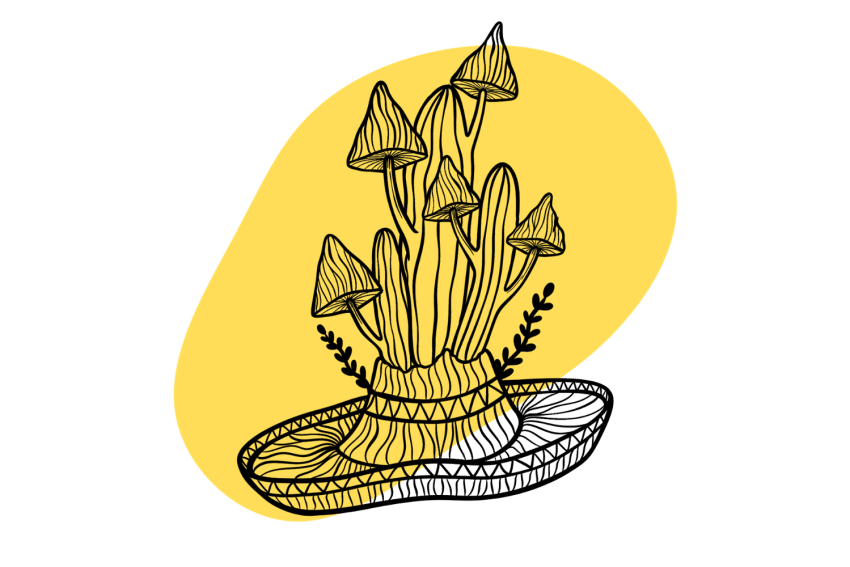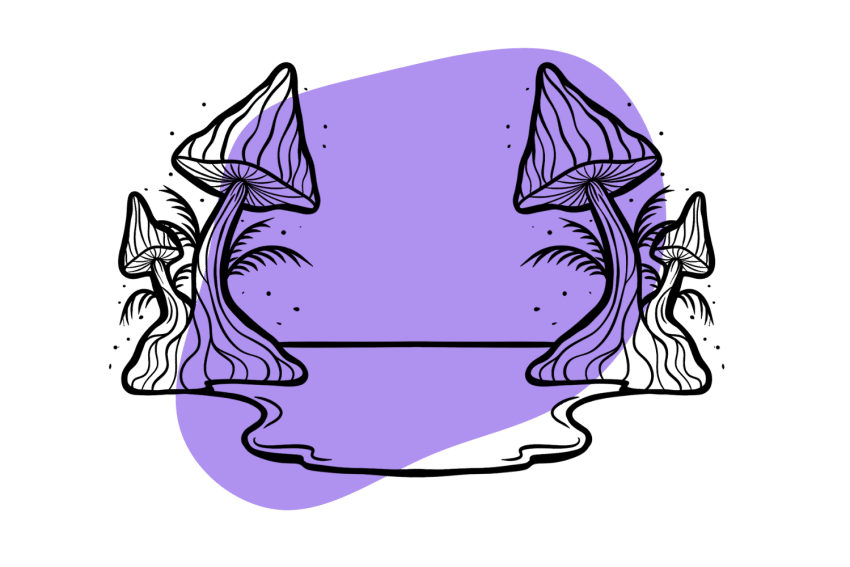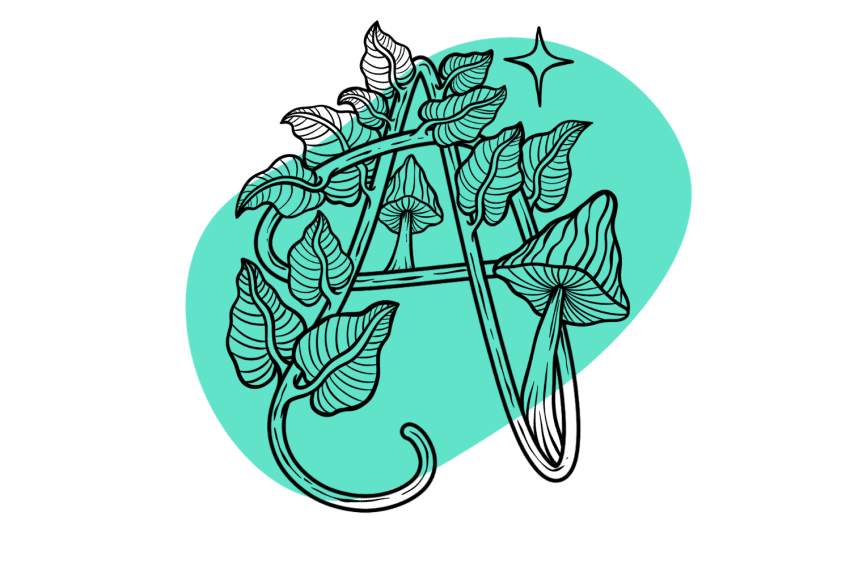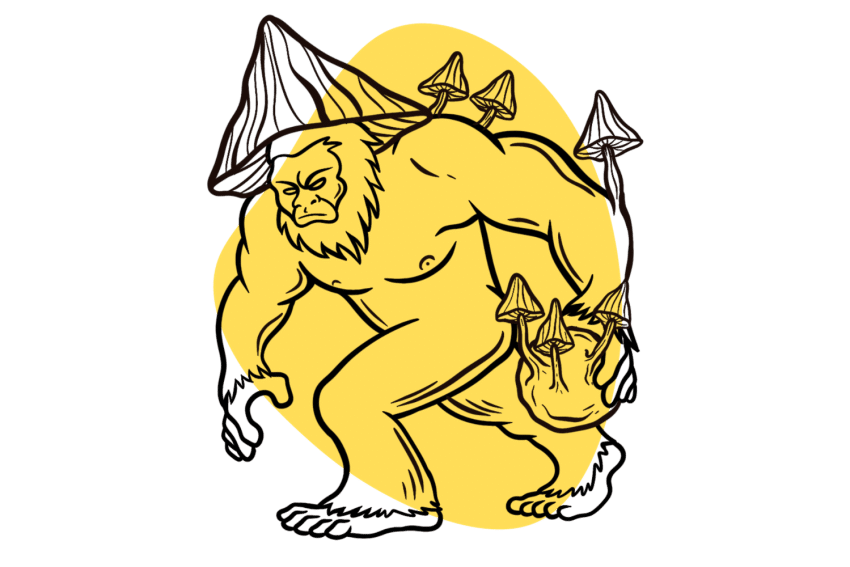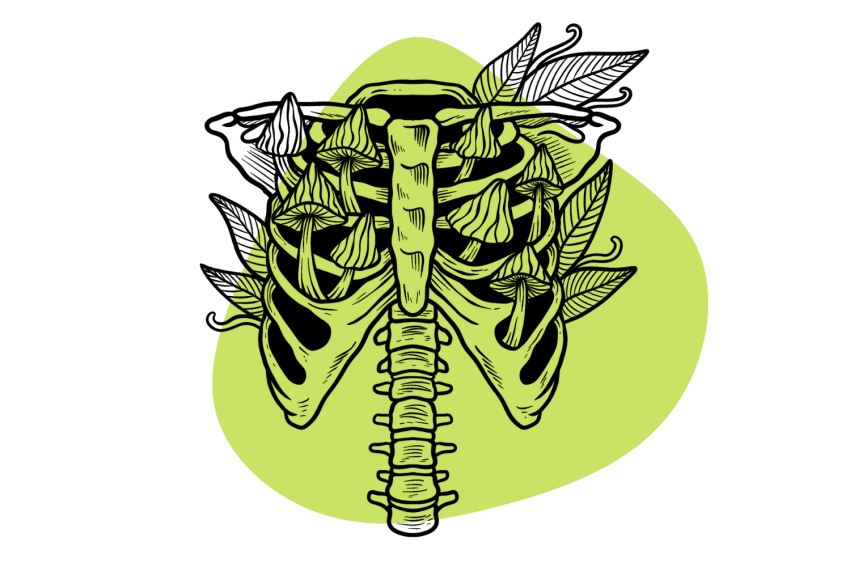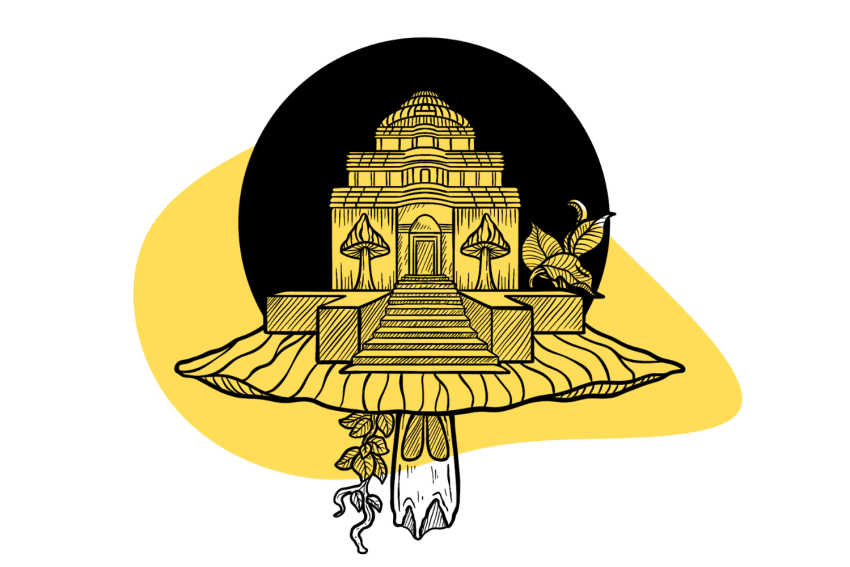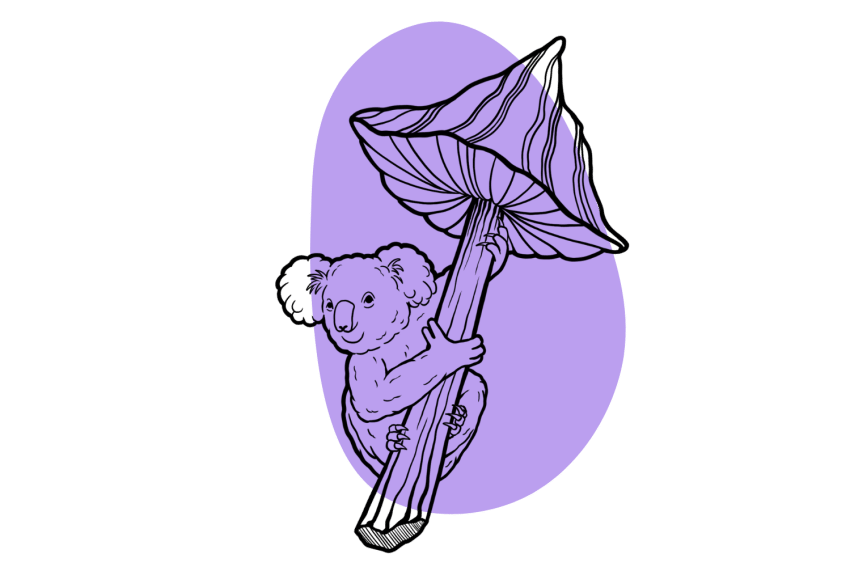The Costa Rican Strain: Mild, But Loved Anyway
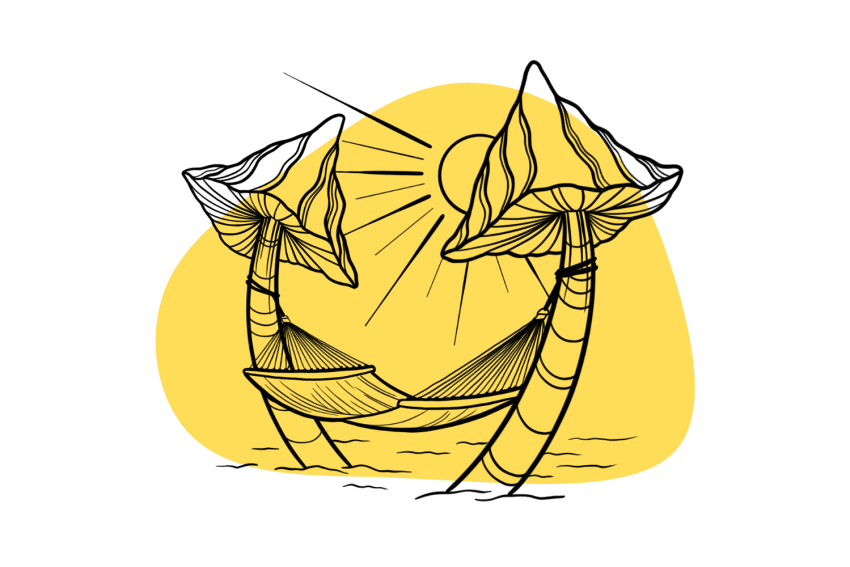
The Costa Rican strain isn’t much to look at. Still, it’s relatively easy to cultivate and is resistant to contamination — making it perfect for intermediate growers looking for an interesting wild strain to grow.
The real question is if the strain is as active as the Volcano in which it was discovered. The truth sadly, is probably not.
Tryptamine testing has shown that this strain has about average potency. Its saving grace is that it’s relatively easy to get high yields of healthy shrooms over the course of several flushes.
The fruiting bodies of the Costa Rican strain are about as “normal” as they could be. They’re medium to large, with the cap ranging between 20 and 70 millimeters and the stem around 150 to 200 millimeters in length. The stems are light yellow, and the caps are golden, turning brown through maturity.
Although the Costa Rican shroom isn’t particularly potent, it has a nice euphoric and entactogenic effect. Waves of warm energy flow over the body, and light visual hallucinations can be noted.
Costa Rican Specs
| Potency | Average 🍄 |
| Cultivation | Intermediate |
| Species | Psilocybe cubensis |
| Substrate Recommendation | Rye Grain, BRF, Manure |
| Cost | $$ |
| Sold By | Ralphsters Spores, Spores 101, The Magic Mushrooms Shop |
History of the Costa Rican Strain
The Costa Rican strain was discovered in, you guessed it, Costa Rica. More specifically, it was discovered in the foothills of the famous Arenal Volcano — an active andesitic stratovolcano located outside the town of La Fortuna.
Supposedly, the infamous mycologist and frequent Shroomery user named “Rhino” found the strain, domesticated it, and introduced the spores to the market.
Although the Costa Rican strain was discovered in a tropical country, this shroom favors colder temperatures. It thrives naturally at around 1000 to 1200 feet above sea level, where the ground and air temperatures are cooler and less humid. Keep this in mind if you choose to cultivate this strain.
The indigenous people of Costa Rica have been using psychedelic plants and fungi native to the area for centuries. It’s extremely likely that what we now call the “Costa Rican strain” has been used spiritually for thousands of years.
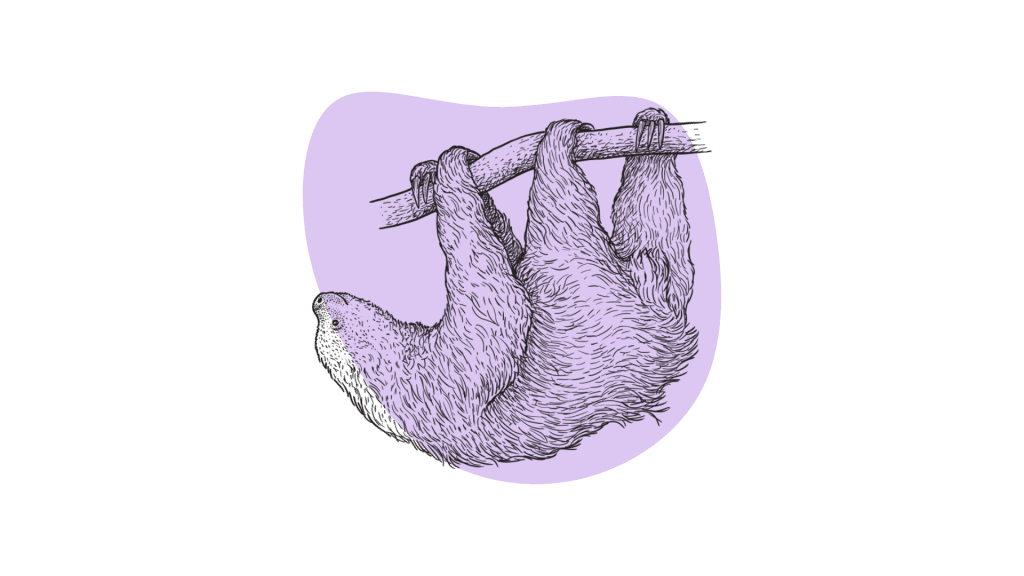
Artifacts have been found that date back to pre-Columbian times in Costa Rica. The National Museum of Costa Rica currently displays two ceramic artworks that resemble psychedelic mushrooms. These artifacts were discovered in the Greater Nicoya region and share several similarities with the Costa Rican strain [1].
We’ll never truly know whether these artifacts represent the Costa Rican magic mushrooms. However, when looking at the abundance of these mushrooms in the area, it’s very likely that relatives of this strain of Psilocybe cubensis has been used ceremonially here for centuries.
Costa Rican Potency & Psilocybin Content
The Costa Rican strain is average in potency. However, many people love this shroom anyway for its effects. With less potency comes less intensity. Many people enjoy this shroom for its light visual stimulation, warm waves of energy, surprisingly strong euphoric effects, and the emotional, empathetic connection it can provide with others.
Although Costa Rican probably isn’t the best choice if you’re looking for a mystical psychedelic experience, it’s fantastic in its own way.
This mushroom is excellent for microdosing and for use out in nature. Due to the desirable but milder effects, a calming and grounding experience can be had without losing much of your inhibition. Feelings of love and spiritual connection make this a great social shroom and potentially a good antidepressant in small doses.
Overall, the effects of the Costa Rican strain make it quite versatile and usable in a variety of situations and occasions. In low to average doses, this can be quite a “social shroom” that uplifts your mood and makes the world seem brighter.
Of course, in higher doses, a proper psychedelic trip is still very possible at doses of 2 grams or higher.
Where to Buy Costa Rican Mushroom Spores
The Costa Rican strain is relatively popular. Costa Rican spores are available from various vendors in the United States, Canada, and Europe. Spores are available in many forms. Prints, spore vials, and sterile spore syringes containing Costa Rican spores are easily obtainable.
For those in the United States of America, the best vendor to source Costa Rican spores from is Ralphsters Spores. This vendor has been around for decades and has a wide variety of Psilocybe cubensis genetics.
For people living in Canada, Costa Rican spores can be purchased from Spores101. This vendor also has a good history and provides various spore samples.
Those living in the United Kingdom and Europe can find Costa Rican spores from The Magic Mushrooms Shop. They deliver a good range of samples across Europe and have a great rapport with their customer base.
How to Grow Costa Rican Mushrooms
Costa Rican spores are relatively easy to cultivate. However, complete beginners may struggle due to the controlled conditions that must be produced to see successful results from the strain.
If you’ve never grown mushrooms before, the easiest and most productive method is PF-Tek. Check out our guide on how to grow magic mushrooms to learn how to implement PF-Tek effectively.
Unlike many other strains of Psilocybe cubensis, the Costa Rican strain thrives in relatively low temperatures. Warm cultivation environments are relatively easy to create indoors. However, creating cooler temperatures can be challenging.
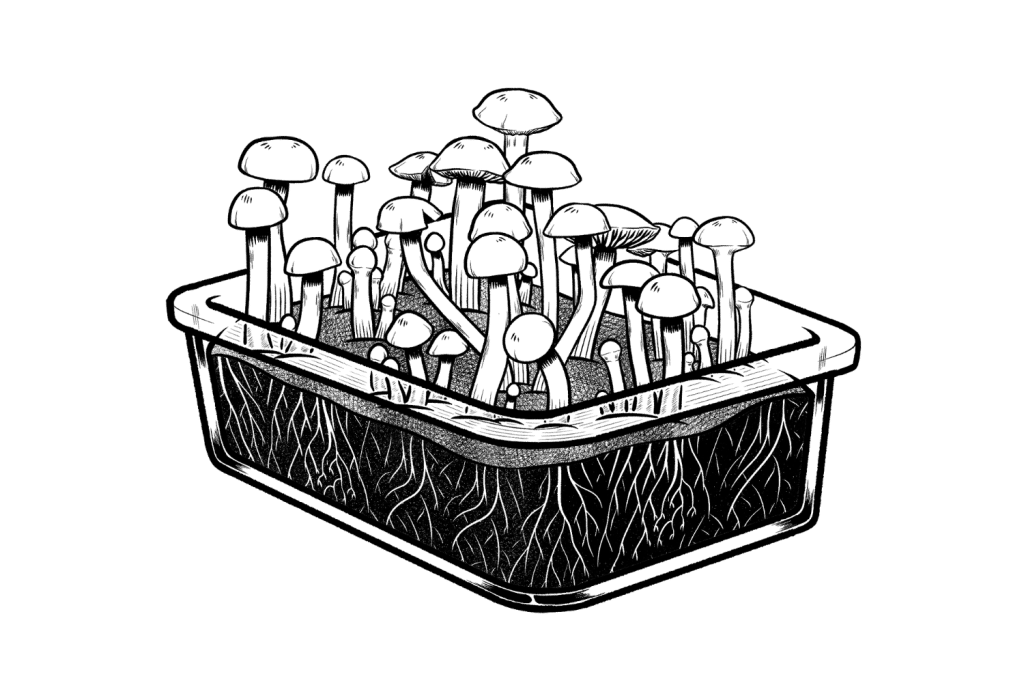
During the incubation phase, keep the inoculated containers of Costa Rican spores at a slightly lower temperature than normal. Ideally, the incubator temperature should not rise above 77℉ (25℃). This may be easily achievable if you live in a cooler climate. However, this may be difficult to achieve for those living in warm environments.
During the fruiting phase, keep the fruiting chamber between 50-64℉ (10-18℃) — with the ideal temperature hovering around 59℉ (15℃). This is even more difficult to achieve if you live in a hot country.
Of course, the Costa Rican strain will cope with some temperature fluctuations. Still, if it gets too hot in either of the cultivation phases, you risk prolonging colonization or stunting the fruiting process, leading to several aborts and an unsuccessful harvest.
Costa Rican grows well on BRF (brown rice flour) cakes, rye grain, or pasteurized manure.
Other Similar Magic Mushroom Strains
Costa Rican is relatively average in terms of its potency. This can be off-putting for those looking for the most potent strains to provide a mystical experience. However, for others, average-potency strains are more attractive.
Average-potency cubes are great for beginners and people that want to cultivate mushrooms for microdosing. Costa Rican is a fantastic choice. However, it’s not the only option.
Here are some other average-potency shroom strains:
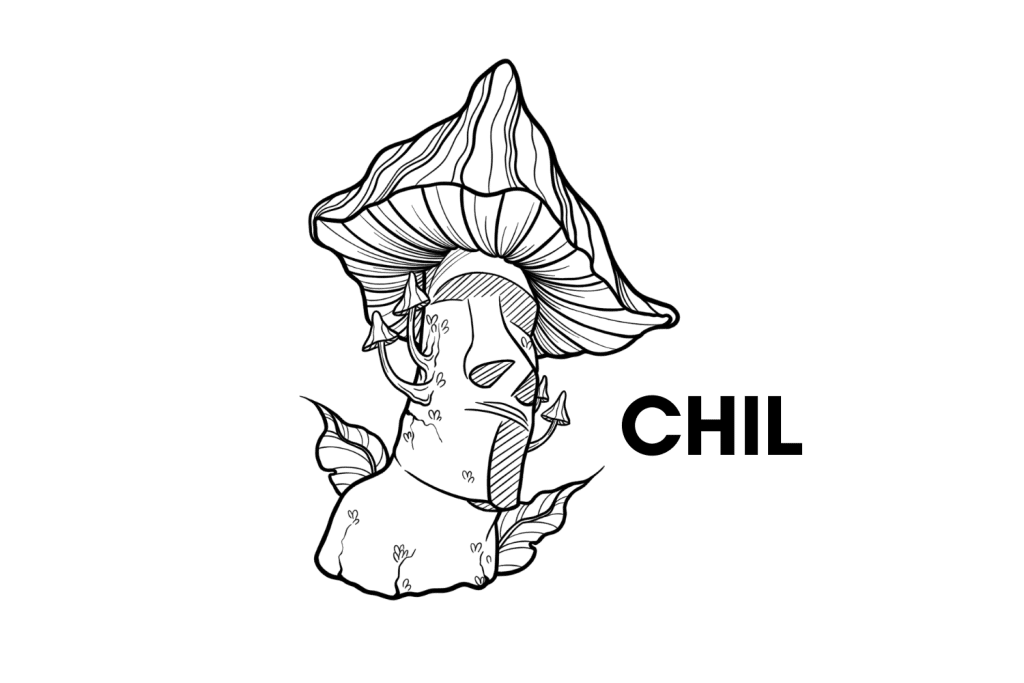
Chilean (CHL)
Chilean is popular for its tolerance to unoptimized growing environments. This is likely because the shroom grows in a range of different climates and altitudes in the wild. This makes it a great choice for the beginner.
The Chilean mushrooms are larger than average but smaller than the Amazon or South American strain — and not quite as potent.
Chilean spores can be hard to come by, but they are starting to appear at some online vendors across the United States and Canada.
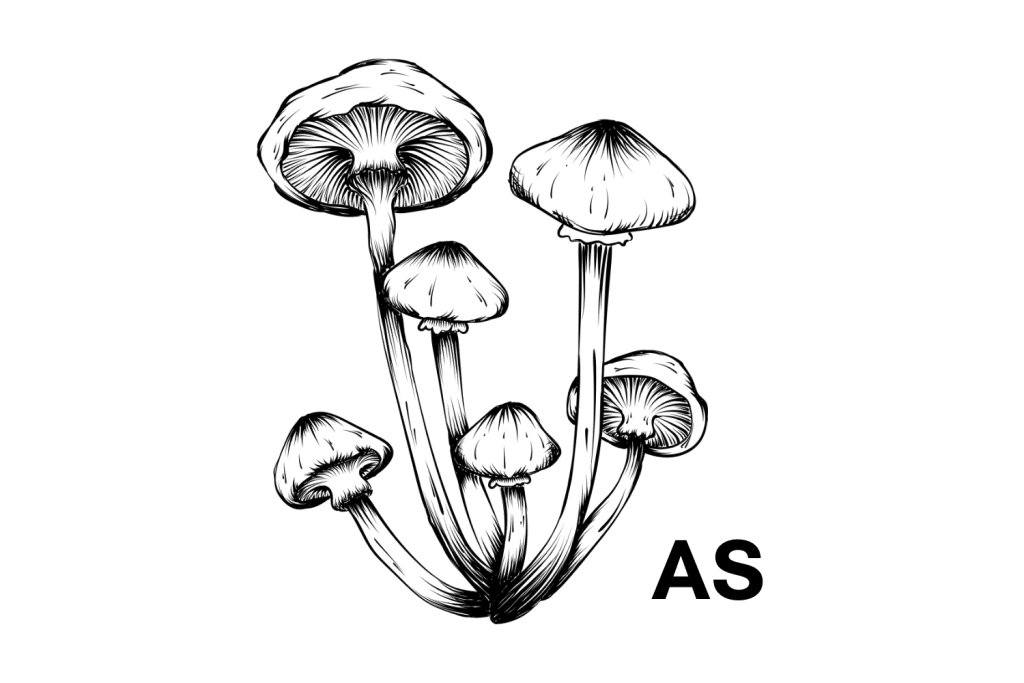
Allen Strain (AS)
The Allen strain is named after the famous mycologist that discovered it — John Allen. It was found in Thailand near Baan Taling Ngam on Koh Samui.
This is a popular strain that is loved by the mushroom community. It’s a well-rounded strain that can be grown in unoptimized conditions with good results. The mushrooms are tall and thin, and the mycelium network colonizes rapidly. With average potency, this is a great strain for those looking for a shroom that’s a little less intense compared to others.
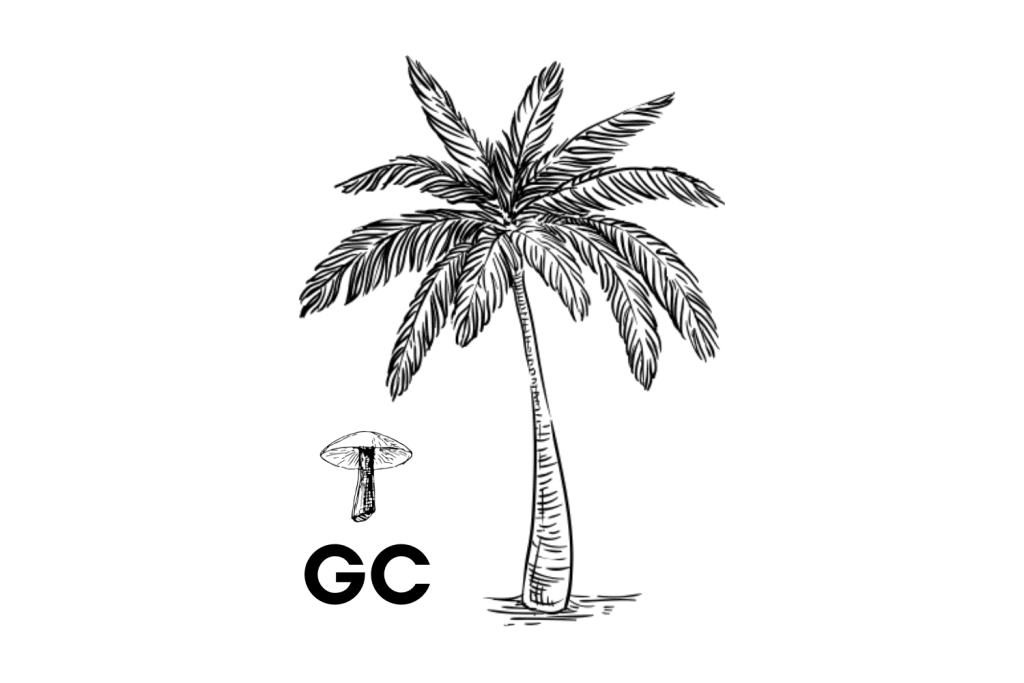
Gulf Coast (GC)
Gulf Coast is famed for its yield potential. With relatively little experience and knowledge, this strain can be cultivated with great success. Average potency fruiting bodies can be produced relatively easily if the growing conditions are right.
This is a fantastic strain for the beginner that’s looking for a shroom with average potency.
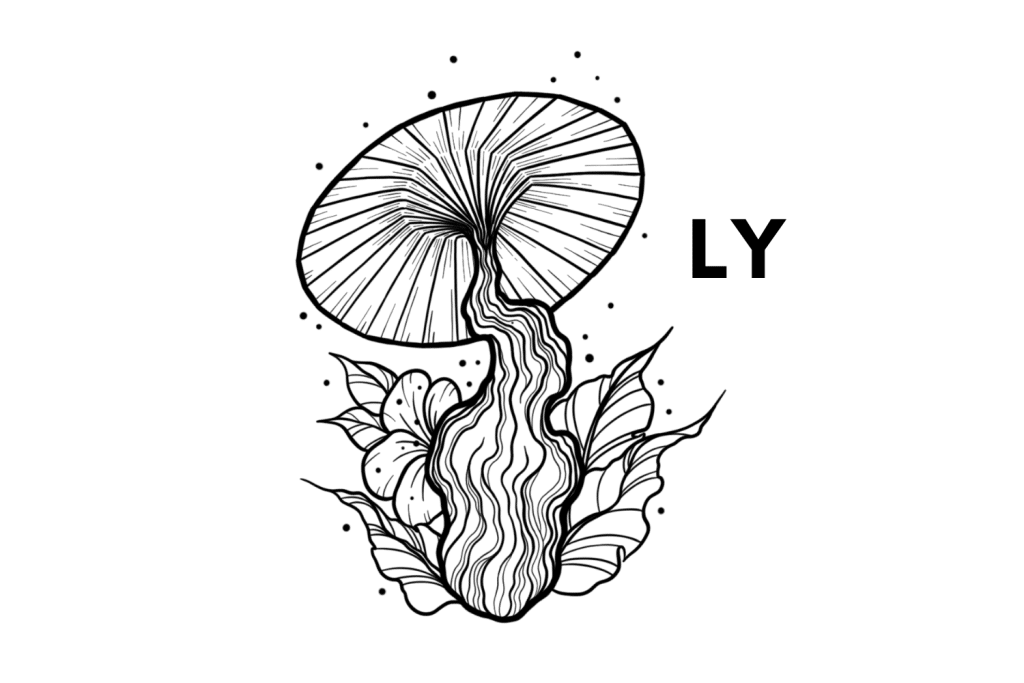
Lipa Yai (LY)
The famous mycologist John Allen discovered Lipa Yai on the Island of Koh Samui. It was found growing close to the Koh Samui strain, and it shares several similarities. However, this strain is less potent and produces fruiting bodies with wide caps and thin stems of even thickness, unlike the Koh Samui.
As with most Thai strains, Lipa Yai is extremely contamination resistant and easy to cultivate.
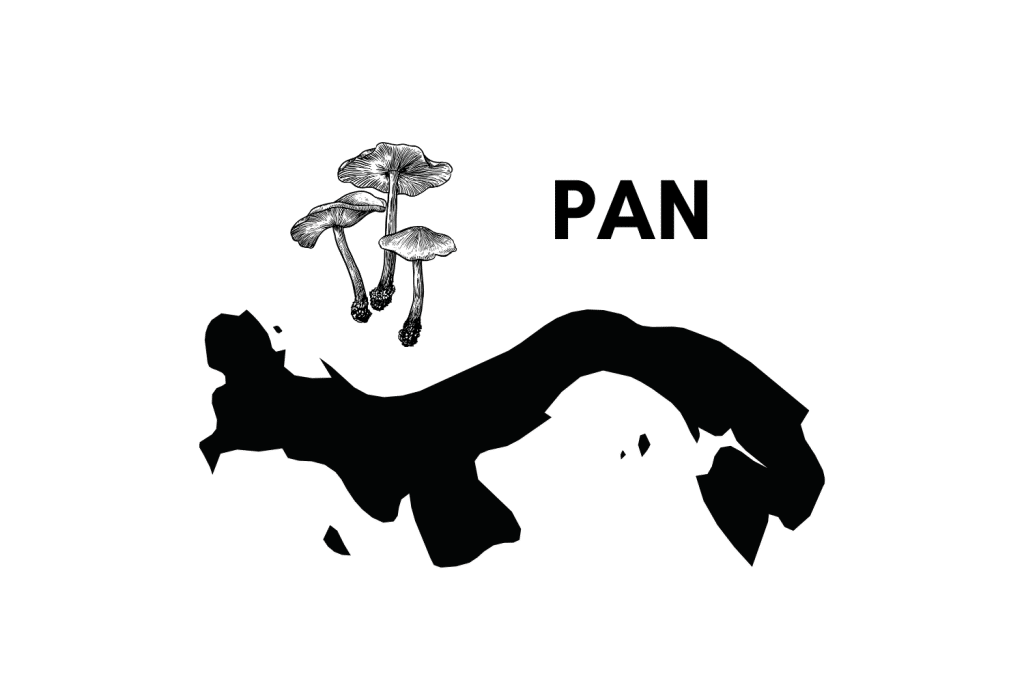
Panama (PAN)
The Panama strain was originally collected from a hotel garden in Panama City. It was reportedly collected, isolated, and brought to market by Ralphster of Ralphsters Spores.
This shroom has average potency but is incredibly contamination-resistant and easy to cultivate. It’s an excellent choice for beginners that are looking for a weaker strain to start with.

Wollongong (WOLL)
Wollongong is an Australian Psilocybe cubensis strain named after the City (Wollongong) that’s situated just south of Sydney. This strain has been popular for a while in the Australian shroom scene. Now its spores are finally available in the US via Ralphsters Spores.
Wollongong produces large mushrooms with light brown caps. It has average potency but is an aggressive colonizer with excellent contamination resistance. This is a relatively easy strain to grow, even for beginners.
Final Thoughts: The Costa Rican Strain
The Costa Rican strain isn’t the first choice for many people. Its relatively average potency levels, cultivation challenges, and pretty basic looks can put people off at first glance. However, if you’re willing to look past the initial representation of the strain, you’ll see how special the mushroom is.
Although Costa Rican is less potent when compared to many other cubes and a bit more difficult to cultivate, it has its charm. The effects of this shroom are desirable. Although a gram or two of dried shrooms isn’t going to send you on a deep psychedelic trip, the effects are extremely spiritual, euphoric, and soul-cleansing.
This is a versatile shroom; if you’re willing to take on the challenge of cultivation, you will be greatly rewarded. This shroom is likely ingrained in ancient culture; although its history is lost to some extent, its “ancient powers” are not.
Costa Rican spores are relatively widespread. You can buy them from several reliable online vendors across the globe. If you want to cultivate this strain, you’ll need some experience, but if you can control the temperatures during cultivation, you should have no problems producing a decent yield.
Strains vs. Species: What’s the Difference?
Out of the hundreds of different psychoactive mushrooms, the most popular among “psychonauts” and most present naturally across the globe is the Psilocybe cubensis species. This species produces the psychoactive compound psilocybin.
There are hundreds of strains of Psilocybe cubensis. One of those strains is, of course, the Costa Rican. Although cubensis strains can look vastly different and vary greatly in potency, they are all still the same species. Even Penis Envy is still part of the Psilocybe cubensis species, even though it’s so massively different from other cubes in looks and potency.
Strains are genetic variants within a single species. A species is a biological family of organisms within a single kingdom. A single kingdom, for example, the fungi kingdom, can contain millions of different species. A single species can contain thousands, if not hundreds of thousands, of different genetic variants (strains).
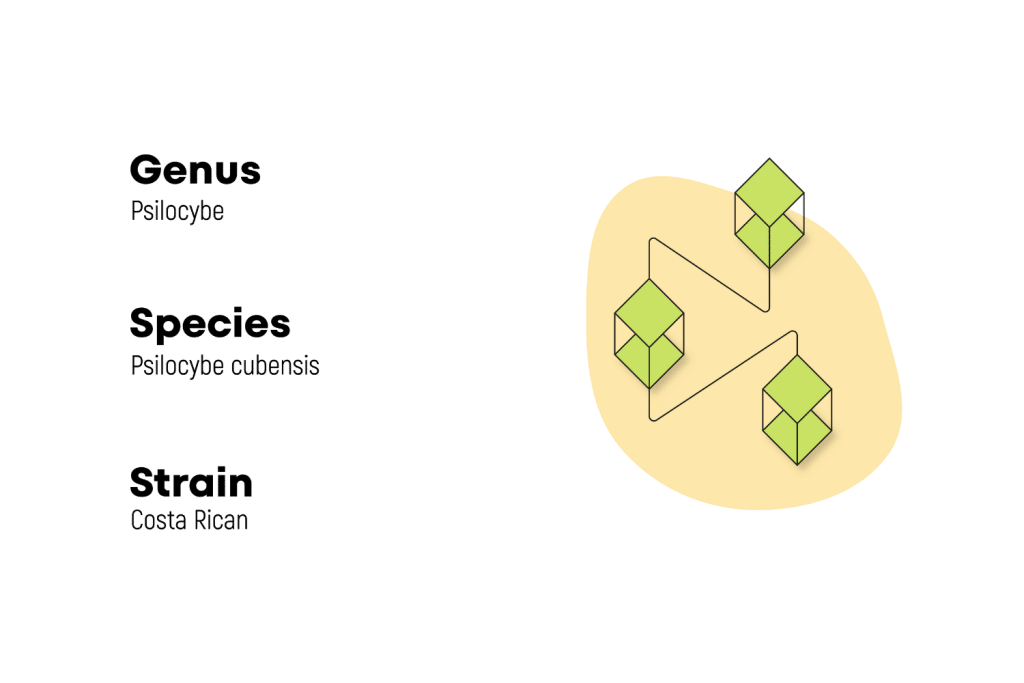
We have created several strains within various species, including Psilocybe cubensis. We’ve cross-cultivated strains of cubensis to create varieties that produce unimaginable psilocybin levels and strains such as White Rabbit to produce white fruits.
References
1. Rodríguez-Arce, José & Cerdas, Marco. (2019). Ritual consumption of psychoactive fungi and plants in ancestral Costa Rica. 3. 1-19. 10.1556/2054.2019.010.

